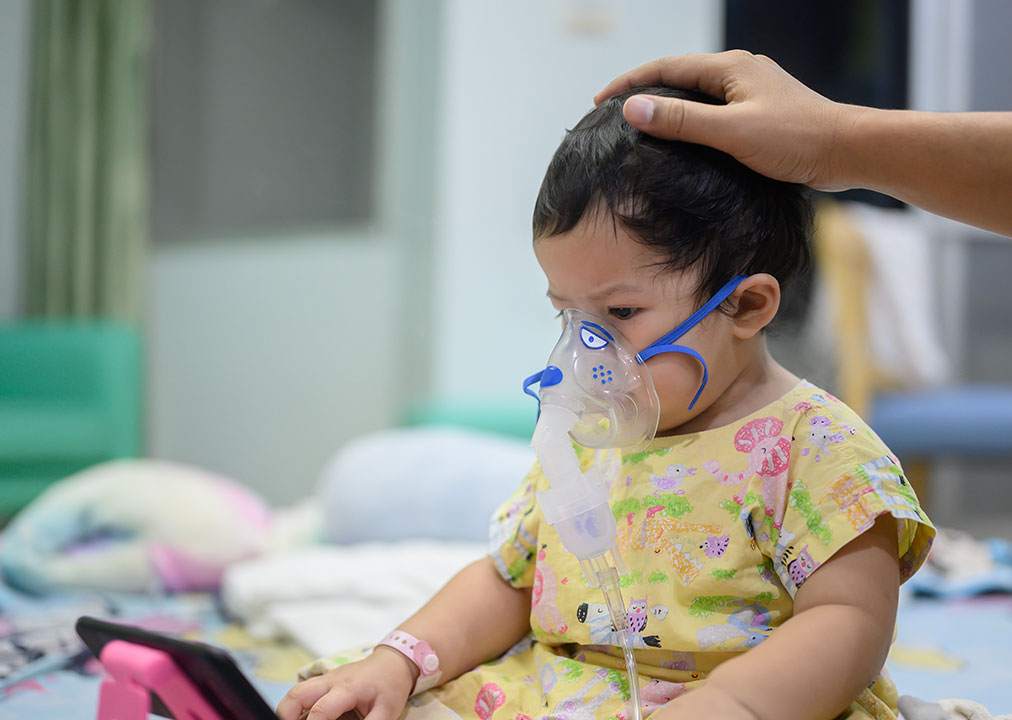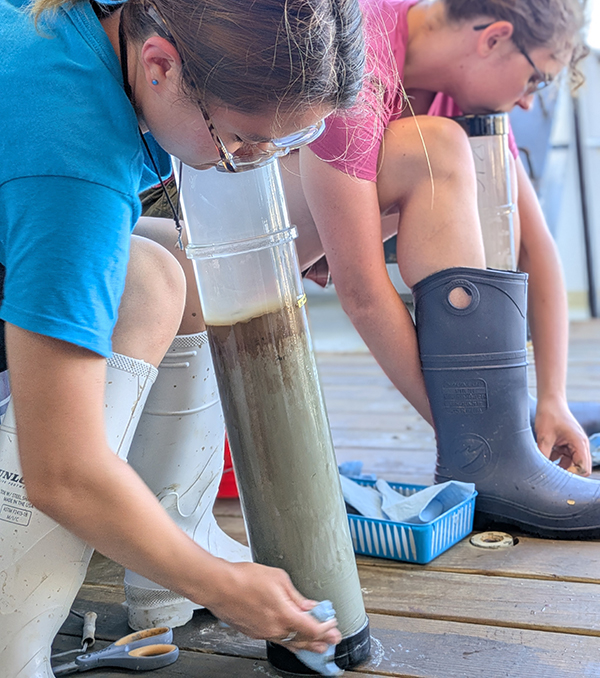Measles: Child dies at Alder Hey after contracting virus – BBC

Report on Measles Fatality and Public Health Crisis in Liverpool
This report details a recent child fatality linked to measles at Alder Hey Children’s Hospital in Liverpool, examining the incident within the context of regional public health trends and its direct implications for the United Nations Sustainable Development Goals (SDGs), particularly SDG 3.
Incident Overview and Public Health Response
Child Fatality at Alder Hey Hospital
A child has died at Alder Hey Children’s Hospital after contracting measles. While the hospital has not released official details regarding the individual case to maintain patient confidentiality, the death has been confirmed. This is reportedly the second child fatality in England associated with measles in the past five years.
- The hospital has noted a significant increase in “seriously unwell” children being admitted with the highly contagious virus.
- Since June, seventeen children have been treated for measles at the facility.
- The hospital treats many patients with compromised immune systems, making them exceptionally vulnerable to infections like measles.
Regional and National Trends
The incident occurs amid a concerning rise in measles cases, attributed to a decline in Measles, Mumps, and Rubella (MMR) vaccine uptake.
- There have been 500 confirmed measles cases in England this year.
- A recent joint report from the World Health Organization (WHO) and UNICEF found that measles cases in Europe have reached a 25-year high.
- The UK Health Security Agency (UKHSA) warns that measles spreads rapidly among unvaccinated populations and can lead to severe complications or death, especially in infants and the immunocompromised.
Alignment with Sustainable Development Goals (SDGs)
Challenges to SDG 3: Good Health and Well-being
The resurgence of measles and the resulting child fatality represent a significant setback for achieving key targets within SDG 3: Good Health and Well-being. The situation highlights critical gaps in public health infrastructure and vaccine equity.
- Target 3.2: End Preventable Deaths of Newborns and Children Under 5 Years. The death of a child from a vaccine-preventable disease like measles is in direct opposition to this fundamental target. It underscores the failure to protect the most vulnerable members of the community.
- Target 3.8: Achieve Universal Health Coverage. This target includes access to safe, effective, and affordable vaccines for all. The vaccination rates in the region fall dangerously short of the 95% coverage target set by the WHO, indicating a failure in achieving universal health coverage.
- North-west England: 85% vaccination rate.
- Liverpool: 73% vaccination rate.
- Manchester: 75% vaccination rate.
- Target 3.b: Support Research, Development, and Universal Access to Affordable Vaccines. While the MMR vaccine is available, low uptake due to misinformation, as noted by Alder Hey’s Chief Nurse, undermines the effectiveness of vaccination programs and the goal of universal access.
Expert Analysis and Recommendations
Expert Commentary
Public health officials have provided clear analysis of the situation:
- Dr Vanessa Saliba, UKHSA: Emphasized that measles is a “particularly nasty disease” with potentially tragic outcomes for vulnerable children.
- Nathan Askew, Chief Nurse at Alder Hey: Attributed the crisis to misunderstandings about the MMR vaccine, reaffirming its 50-year history of being “very safe, tried and tested.”
- Professor Matthew Ashton, Liverpool Director of Public Health: Stated that one person with measles can infect up to 15 others and reiterated that the disproven claim linking the MMR vaccine to autism has been repeatedly debunked.
Call to Action
The consistent message from health experts and affected families, such as the mother of a previous victim, is the urgent need for parents to ensure their children are vaccinated. This action is critical not only for individual protection but for community-wide herd immunity, which protects those who are too young or medically unable to be vaccinated. Achieving the WHO’s 95% vaccination target is essential to prevent further outbreaks and fatalities, thereby advancing the core objectives of SDG 3.
Analysis of Sustainable Development Goals in the Article
1. Which SDGs are addressed or connected to the issues highlighted in the article?
The primary Sustainable Development Goal (SDG) addressed in the article is:
- SDG 3: Good Health and Well-being. The entire article focuses on public health issues, specifically the outbreak of a communicable disease (measles), its severe consequences, including child mortality, and the critical role of vaccination in preventing illness and death. It discusses the strain on healthcare facilities (“surge in ‘seriously unwell’ children being admitted”) and the public health response to falling immunization rates.
2. What specific targets under those SDGs can be identified based on the article’s content?
Based on the article’s discussion of measles, child mortality, and vaccination, the following specific targets of SDG 3 are relevant:
-
Target 3.2: By 2030, end preventable deaths of newborns and children under 5 years of age.
- Explanation: The article directly addresses this target by reporting on the death of a child from measles, which is a vaccine-preventable disease. The mention that this is “the second child in England to die in the past five years after contracting measles” highlights that these are preventable deaths that are still occurring, undermining progress toward this target.
-
Target 3.8: Achieve universal health coverage, including… access to safe, effective, quality and affordable essential medicines and vaccines for all.
- Explanation: The core issue discussed is the “fall in measles, mumps and rubella (MMR) vaccine uptake.” The article contrasts the World Health Organization’s goal of 95% vaccination coverage with the lower rates in the north-west of England (85%), Liverpool (73%), and Manchester (75%). This gap in vaccination coverage demonstrates a failure to achieve universal access to and uptake of essential vaccines.
-
Target 3.b: Support the research and development of vaccines and medicines for the communicable… diseases… provide access to affordable essential medicines and vaccines…
- Explanation: The article emphasizes the importance of providing access to the MMR vaccine for the communicable disease of measles. The chief nurse’s statement that the “vaccine’s been in use for well over 50 years. It’s very safe, tried and tested,” and the campaign for parents to vaccinate their children, directly relate to ensuring the population has access to and utilizes existing, effective vaccines.
-
Target 3.d: Strengthen the capacity of all countries… for early warning, risk reduction and management of national and global health risks.
- Explanation: The measles outbreak is presented as a significant national health risk. The article details the response and warnings from health authorities like Alder Hey Children’s Hospital and the UK Health Security Agency. The statement that “measles is one of the most highly infectious diseases and spreads rapidly among those who are unvaccinated” underscores the need for robust public health systems to manage such risks.
3. Are there any indicators mentioned or implied in the article that can be used to measure progress towards the identified targets?
Yes, the article mentions several quantitative and qualitative indicators that can be used to measure progress:
-
Child Mortality from Preventable Disease (Indicator for Target 3.2):
- Explanation: The article’s central point is the death of a child from measles. This specific event serves as a direct, albeit tragic, indicator of failure to prevent child deaths from vaccine-preventable diseases. The statistic that this is the “second child in England to die in the past five years after contracting measles” is a measure of this outcome.
-
Vaccination Coverage Rate (Indicator for Target 3.8 and 3.b):
- Explanation: The article provides explicit data to measure this indicator. It states the WHO’s target (“95% of children fully vaccinated by their fifth birthday”) and compares it with current rates in “the north-west of England the figure is 85%, with lower rates of 73% per cent in Liverpool and 75% Manchester.” These percentages are direct indicators of vaccine coverage.
-
Incidence of Communicable Disease (Indicator for Target 3.d):
- Explanation: The article provides figures on the number of measles cases, which is an indicator of how well a health risk is being managed. It mentions there have been “500 cases of measles this year in England” and that “Seventeen children have been treated at Alder Hey for measles since June.” These numbers track the scale of the outbreak.
4. Summary Table of SDGs, Targets, and Indicators
| SDGs | Targets | Indicators Identified in the Article |
|---|---|---|
| SDG 3: Good Health and Well-being | 3.2: End preventable deaths of newborns and children under 5 years of age. | Number of child deaths from measles (“A child has died… after contracting measles”). |
| SDG 3: Good Health and Well-being | 3.8: Achieve universal health coverage, including access to safe, effective… vaccines for all. | MMR vaccination coverage rates (WHO target: 95%; North-West England: 85%; Liverpool: 73%; Manchester: 75%). |
| SDG 3: Good Health and Well-being | 3.b: Support… access to affordable essential medicines and vaccines for communicable diseases. | The gap between available, safe vaccines and public uptake (“fall in measles, mumps and rubella (MMR) vaccine uptake”). |
| SDG 3: Good Health and Well-being | 3.d: Strengthen capacity… for risk reduction and management of national… health risks. | Number of measles cases (“500 cases of measles this year in England”; “Seventeen children have been treated at Alder Hey for measles since June”). |
Source: bbc.com

What is Your Reaction?
 Like
0
Like
0
 Dislike
0
Dislike
0
 Love
0
Love
0
 Funny
0
Funny
0
 Angry
0
Angry
0
 Sad
0
Sad
0
 Wow
0
Wow
0































































![Governing Health -Compensation Considerations for Health System Innovation Activities [Podcast] – The National Law Review](https://natlawreview.com/sites/default/files/styles/article_image/public/2025-10/Health AI Security Privacy Data Cyber Medical Doctor-309772690.jpg.webp?itok=i51uHMDx#)
_21.jpg?#)













